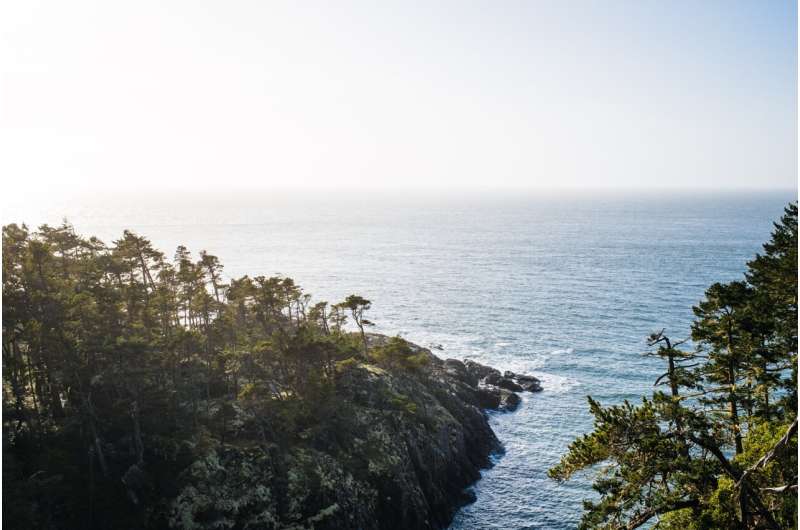Tracing water particles back in time

Low-oxygen conditions in oceans negatively affect marine life and ecosystems. Although many coastlines experience regular low-oxygen periods, the phenomenon is becoming more common as dissolved oxygen decreases globally. Deciphering how oxygen levels fluctuate throughout the year can help scientists better understand marine ecosystem dynamics.
In a new study, Sahu and a team of researchers dove deep into the waters off Vancouver Island, where every summer a low-oxygen dense pool of water settles over the continental shelf. The region is part of the Juan de Fuca Eddy—which sits at the northern end of the California Current System—and spans the bathymetrically complex continental shelf.
The researchers analyzed the potential sources of water that contribute to the low-oxygen summer pool. They populated an oceanic numerical model for the region using data collected during a scientific cruise in August 2013. The model depicts how ocean properties like temperature and salinity vary over time. In the model, they traced water particles backward in time using a method called Lagrangian particle tracking. In addition, the authors used kernel density estimation to determine the geographic origin of the low-oxygen pool's source water.
The results showed that low-oxygen deep summer waters arrive from the south in early summer. Specifically, the models showed that 45% of the low-oxygen pool derives from the California Undercurrent and an additional 20% originates in deeper, offshore waters. Additionally, the low-oxygen waters weave through a maze of submarine canyons in the Juan de Fuca region to arrive at Vancouver Island. This movement is opposite the summer currents on the continental shelf, which typically flow from the north.
According to the authors, elucidating this movement of water reveals critical mechanisms driving one of the most biologically productive coastlines in the world.
More information: Saurav Sahu et al, Spatial and Temporal Origins of the La Perouse Low Oxygen Pool: A Combined Lagrangian Statistical Approach, Journal of Geophysical Research: Oceans (2022). DOI: 10.1029/2021JC018135
Provided by American Geophysical Union
This story is republished courtesy of Eos, hosted by the American Geophysical Union. Read the original storyhere.





















